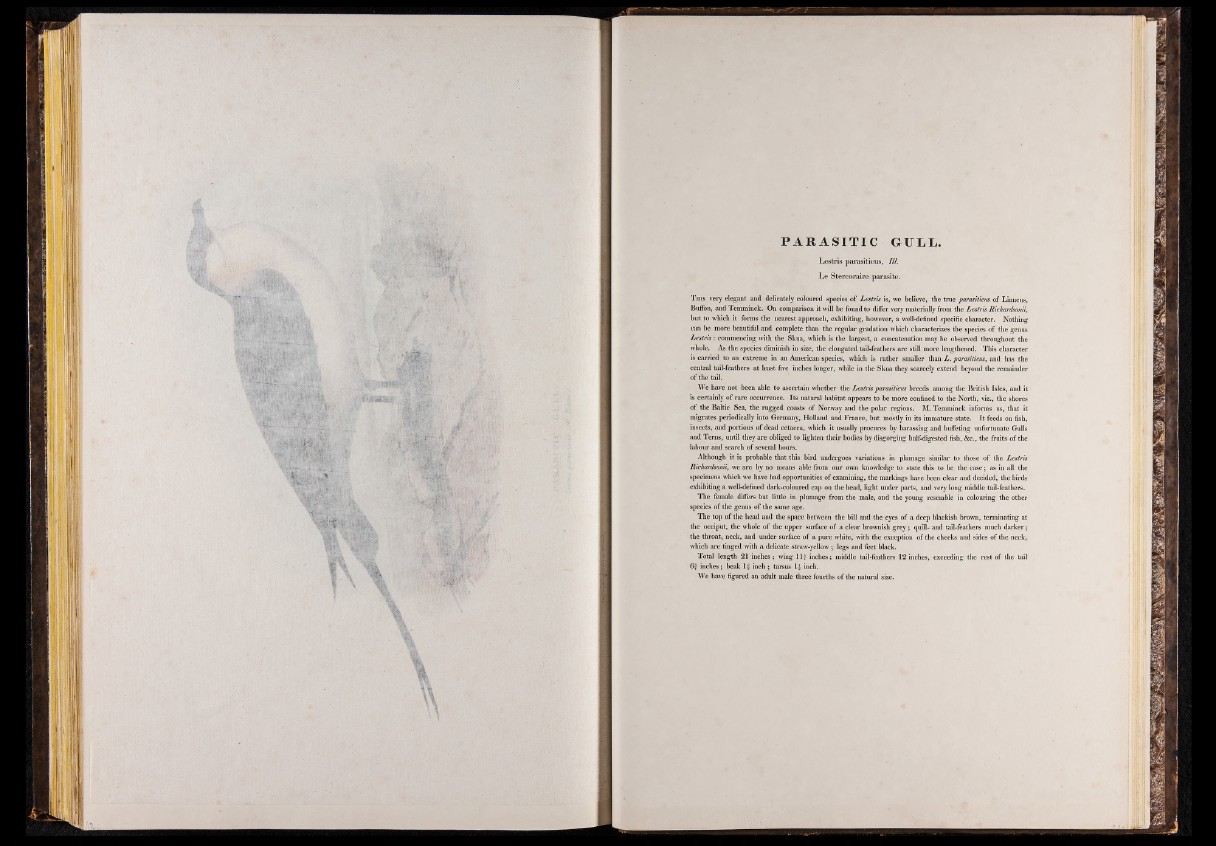
P A R A S I T IC GULL.
Lestris parasiticus, Til.
Le Stercoraire parasite.
T his very elegant and delicately coloured species of Lestris is, we believe, the true parasiticus of Linneus,
Buffon, and Temminck. On comparison it will be found to differ very materially from the Lestris Richardsonii,
but to which it forms the nearest approach, exhibiting, however, a well-defined specific character. Nothing
can be more beautiful and complete than the regular.gradation which characterizes the species o f the genus
Lestris : commencing with the Skua, which is the largest, a concatenation may be observed throughout the
whole. As the species diminish in size, the elongated tail-feathers are still more lengthened. This character
is carried to an extreme in an American species, which is rather smaller than L . parasiticus, and has the
central tail-feathers at least five inches longer, while in the Skua they scarcely extend beyond the remainder
of the tail.
We have not been able to ascertain whether thè Lestris parasiticus breeds among the British Isles, and it
is certainly of rare occurrence. Its natural habitat appears to be more confined to the North, viz., the shores
of the Baltic Sea, the rugged coasts of Norway and the polar regions. M. Temminck informs us, that it
migrates periodically into Germany, Holland and France, but mostly in its immature state. It feeds on fish,
insects, and portions o f dead cetacea, which it usually procures by harassing and buffeting unfortunate Gulls
and Terns, until they are obliged to lighten their bodies by disgorging half-digested fish, &c., the fruits o f the
labour and search of several hours.
Although it is probable that this bird undergoes variations in plumage similar to those of the Lestris
Richardsonii, we are by no means able from our own knowledge to state this to be the case; as in all the
specimens which we have had opportunities of examining, the markings have been clear and decided, the birds
exhibiting a well-defined dark-coloured cap on the head, light under parts, and very long middle tail-feathers.
The female differs but little in plumage from the male, and the young resemble in colouring the other
species of the genus of the same age.
The top o f the head and the space between the bill and the eyes of a deep blackish brown, terminating at
the occiput, the whole of the upper surface of a clear brownish grey ; quill- and tail-feathers much darker ;
the throat, neck, and under surface of a pure white, with the exception of the cheeks and sides of the neck,
which are tinged with a delicate straw-yellow ; legs and feet black.
Total length 21 inches; wing I l f inches; middle tail-feathers 12 inches, exceeding the rest of the tail
6f inches ; beak I f inch ; tarsus I f inch.
We have figured an adult male three fourths of the natural size.